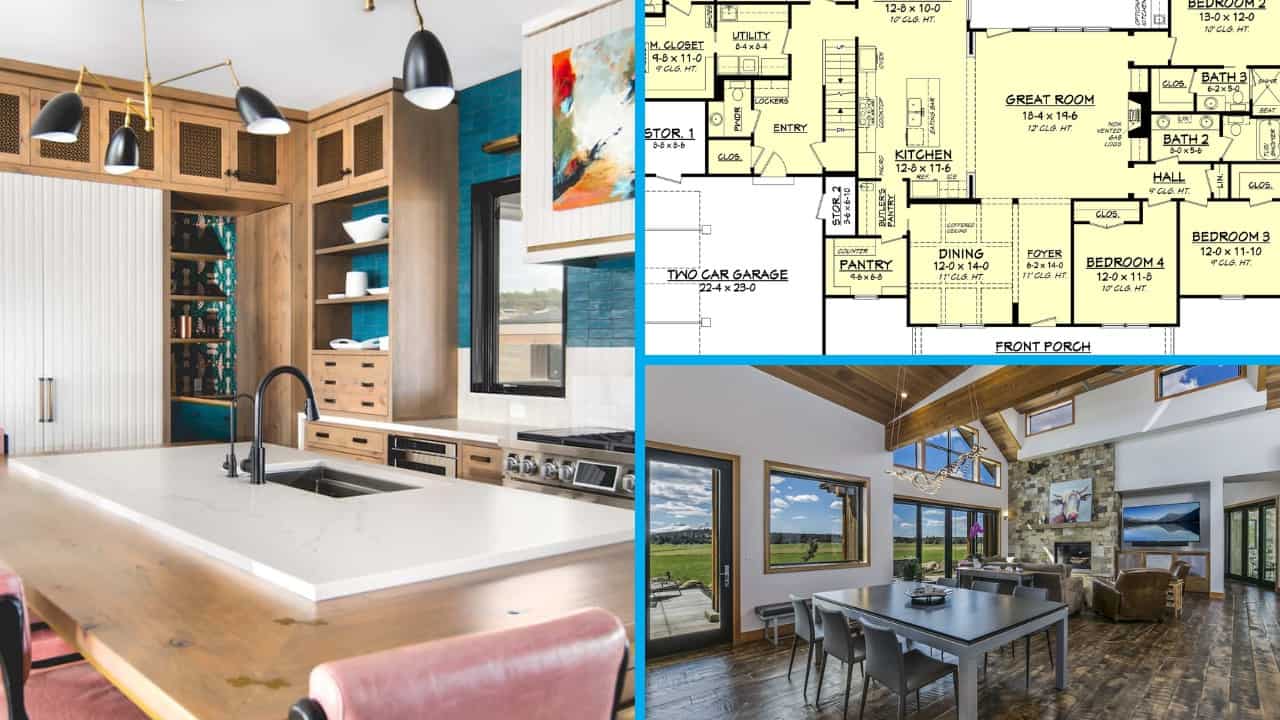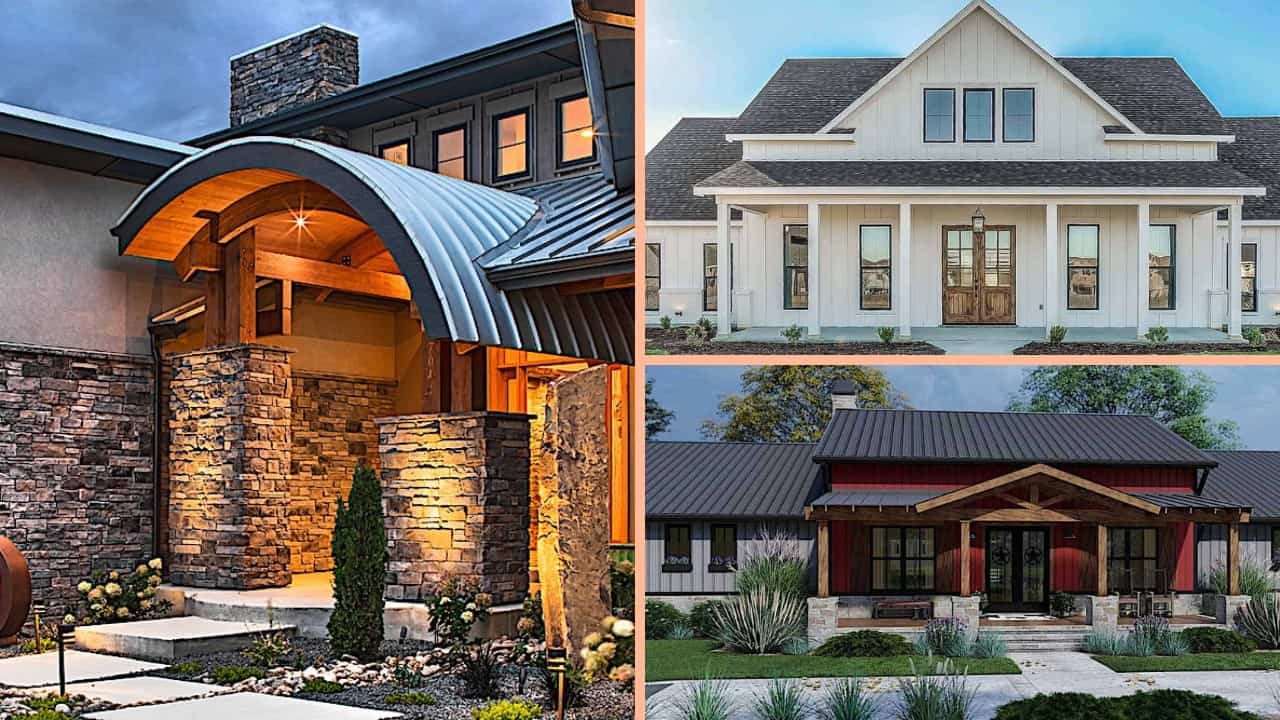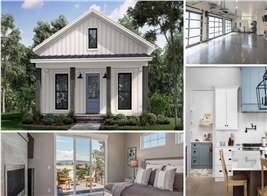In With the Old as Vintage Home Features Make a Comeback
By Rexy Legaspi | Updated May 18, 2022
Spice Up Your New Home with Retro Features
Step into one of today’s modern homes, and you may be surprised to find some vintage fixtures around the place. See a gorgeous wood record player cabinet or a dumbwaiter in the Great Room? Look up and marvel at the tin ceiling. From fashion to architecture, vintage is back. Today these “old-home” features are spicing up new houses.
Here’s a close glance at some retro furniture styles, decorative accessories, and features that are making a comeback.
Record-Player Cabinets
Once a key feature of the living room, the beautifully-finished wood record-player cabinet was relegated to the basement or a garage sale when CDs, iTunes, and YouTube, among others, rendered Long-Playing albums obsolete. However, vintage furniture lovers—fascinated with the woodwork and designs—have brought them back as decor pieces in country homes, modern residences, and apartments.
A colorful record-player cabinet will fit quite nicely in the Great Room of this two-story country house plan. (Plan # 126-1287)
(Left photo credit: Dane Deaner on Unsplash)
Dutch Doors
What’s in a name? The Dutch door, stable door, half door, or double-hung door has been around since the 17th century and was very popular during Colonial times. With its two independent halves, the door allowed fresh air and light to filter into kitchens yet keep the farm animals away from the house.
Like the porch in some ways, the Dutch door, with its top half open, was the spot to wave to passersby or swap stories with neighbors. In today’s homes, Dutch doors can be located in the kitchen, foyer, laundry, or mudroom.
A traditional style house plan’s wood front door with glass pane mimics the idea of a Dutch door (Plan # 168-1104).

Here’s a delightful kitchen with a Dutch door.
(Photo credit: Paul Hanaoka on Unsplash)
Tin Ceilings
Tin ceilings—the answer to the very expensive and finely sculpted plaster ceilings of the luxurious European homes—became popular in North America in the mid-1800s. Originally made of thin metal sheets that were fireproof and durable, the tin ceilings were soon fitted with decorative tiles of varying designs to give homes a bit of flair and style.
Tin ceilings faded from the architectural scene in the 1930s. But restoration buffs—intrigued by the history and classic beauty of tin ceilings—have re-ignited an interest in these vintage features. Today, there are a number of companies that include tin ceilings in the design of new homes.

A very kitchen / breakfast nook gets a distinctive look with its decorative tin ceiling while still being a modern kitchen.
Laundry Chutes
What ever happened to the old laundry chute? An excellent way of getting dirty clothes to the laundry room, this fixture in a lot of old houses is attractive to new homeowners, who are fascinated with having one in their home. Apartment dwellers and people who live in two-story homes who have carried dirty clothes, linens, and beddings down to the laundry room too many times to count will definitely love laundry chutes, too. What a convenience to have this “drop”—and not to have to walk up and down the stairs with heavy loads!
The laundry chute fell out of favor because it was considered a fire hazard and a safety issue for children. If you’re a homeowner set on having one, here are a few tips:
1. Build one with a door that children cannot easily open and/or climb.
2. Discuss logistics carefully with your architect or contractor to be certain the chute is nowhere near a furnace or a heater.
3. The chute should empty the clothes into a hamper or some kind of container—and not on the basement floor.
Dumbwaiters
If you want that Old-World touch in your home, a dumbwaiter may just be the piece for you. This device has been around since Roman times and has gone through a few transformations. In the Paris of Thomas Jefferson, dumbwaiters were open shelves stacked on top of each other—loaded with entrees and everything Jefferson and his guests needed for dinner. When Jefferson wanted to dine in privacy in his Monticello and Poplar Forest homes, he used dumbwaiters that he brought with him from Europe.
Through the ages, though, devices that transported supplies between floors—be it in a medieval castle, an English manor house, a modern American residence, an apartment, or a restaurant—were also known (perhaps more well known) as dumbwaiters. From the simple hand-operated one to the sophisticated electric model, dumbwaiters made housework easier because they did all the heavy lifting around the house. They are practical and help not only older members of the family but younger ones as well, who may find it difficult to carry heavy loads from one floor to the other.
Why did they lose their charm? Like laundry chutes, dumbwaiters presented some safety hazards, especially for children, who were intrigued with the idea of squeezing into the “elevator” to go up and down the house.
But today, the dumbwaiter is slowly regaining its popularity. Unlike the earlier models, these are childproof and come with safety features, including sensors, fireproof walls and doors.
Central Vacuums
The technological invention of the early 1900s, the central vacuum cleaner was a system built into a house or building to get rid of dirt and dust. Its power unit was installed in the basement or a storage room—pipes were installed throughout the house “terminated at a pump … that pulled air through a crude filter system and exhausted it outdoors.”
Very popular in large suburban homes of the era, central vacuums facilitated the cleaning and upkeep of hallways on the various floors, the bedrooms, and social spaces. They were quiet and very easy to use, and they discharged all of the dirt outside the home.
Central vacuum cleaners went out of style in the U.S. during the Depression, but other countries continued to use them. It took a while before Americans picked up the technology again. Whether it’s the health benefit—no danger of catching allergens or dust—or its ease of operation, central vacuum cleaners are becoming trendy again.
So, are you ready to go vintage and spice up your home with these old-school features?
Footnote: The lead image (upper) in this article is a one-story, two-bedroom contemporary style home. Imagine some vintage features in this lovely new residence. For more on the home, view: (Plan # 158-1290)















